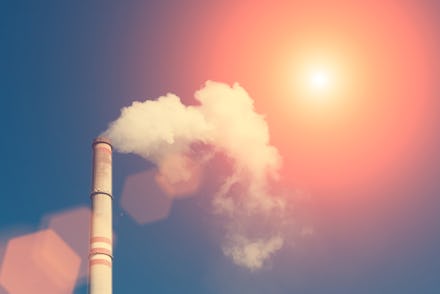Communities of color are more susceptible to the deadly effects of air pollution

A study published in PLOS Medicine on Tuesday, July 23 found that air pollution may have led to some 30,000 deaths in the US in 2015. Poorer counties and those with a lower proportion of high school graduates, as well as predominantly Black counties, were especially hard hit.
The study homed in on fine particulate matter, present in emissions from power plants, vehicles, and other sources. These types of particles are the most dangerous to health, according to the Environmental Protection Agency (EPA). Once inhaled, they can travel far down into the lungs and possibly even enter the circulatory system.
Researchers at Imperial College London and other institutions analyzed data from counties throughout the contiguous US (that is, not including Hawaii and Alaska) spanning from 1999 to 2015. These data sets included average fine particulate matter concentrations, as well as deaths by age, sex, and underlying cause. The study authors searched for links between fine particulate matter concentrations and deaths due to cardiorespiratory diseases. (Previous studies have also associated fine particulate matter with such diseases.) In addition, they accounted for variables such as income, education, and race, which could have also influenced health outcomes.
During the time period analyzed in the study, fine particulate matter concentrations declined, as did death rates, while life expectancy increased, reflecting the tightening of air quality standards over the years. But even these reduced fine particulate matter concentrations were associated with tens of thousands of deaths.
Fine particulate matter concentrations that were higher than the lowest concentration the researchers observed — 2.8 micrograms per cubic meter — were associated with higher rates of death from cardiorespiratory diseases (an estimated 15,612 deaths due to cardiorespiratory diseases in women and 14,757 in men in 2015). These deaths, in turn, shaved off 0.15 years in life expectancy from women and 0.13 years from men. Counties in and near Los Angeles, as well as in southern states such as Alabama and Arkansas, had the greatest decreases in life expectancy.
The researchers saw these trends even though fine particulate matter concentrations had reached historically low levels and for the most part, fell below the EPA’s annual standard of 12 micrograms per cubic meter. This standard basically says that, “if you’re lower than 12, you’re safe,” explains Anthony Wexler, director of the Air Quality Research Center at the University of California, Davis, who wasn't involved in the research but does serve on the external advisory board of the EPA-funded Center for Clean Air Climate Solution, which supported the study. “What this study says is that even at 2.8, you’re seeing problems.”
The EPA reduced the annual standard from 15 to 12 micrograms per cubic meter in 2012. But if more studies show harmful health effects at concentrations below 12 micrograms per cubic meter, they could convince the agency to lower its annual standard even further, Wexler says.
The researchers observed bigger decreases in life expectancy in poorer counties, those with lower proportions of high school graduates, and those with higher proportions of Black residents. That they saw this even after controlling for race and other social factors suggests air pollution interacts synergistically with these factors to worsen health outcomes, Wexler tells Mic.
“There have been many studies showing that less advantaged communities are more susceptible to air pollution’s health effects,” he says. In a recent EPA study, those who lived in poverty breathed 1.35 times more fine particulate matter than the overall population, while Black people breathed 1.54 times more. Older studies have shown that being exposed to violence or chronic stress can make children more vulnerable to the effects of pollutants, which can then worsen their asthma outcomes. “Basically, there’s an interaction between social stress and air pollution which then exacerbates the effect of both," Wexler says.
This interaction, in turn, emphasizes the importance of policies that address not only air pollution, but also social inequalities. “Ideally, you would improve both at the same time,” Wexler says. “If you didn’t have people who were so vulnerable… because of their socioeconomic status and the stress related to that, then the air pollution wouldn’t have as much of an effect.”
Yet the Trump administration wants to roll back on emissions regulations established under Obama and recently announced a proposal that would remove access to food stamps from around three million people. Stricter air quality standards and more equitable social policies could help, Wexler says, but will require voting in politicians willing to institute them.